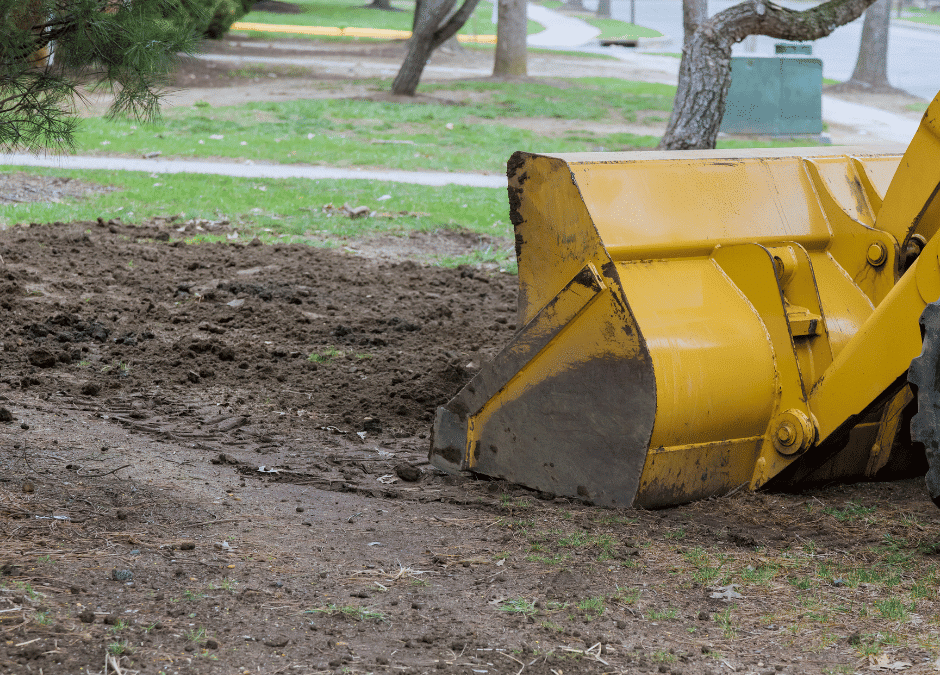Land grading is a crucial step in landscaping that ensures proper water drainage and prepares the ground for planting or construction. At Douglasville Land Clearing and Grading, we provide expert grading services to enhance your landscape. Proper land grading can prevent water damage, improve soil quality, and create a beautiful, functional outdoor space. Let’s dive into the basics of land grading and why it’s essential for your landscaping projects.
What is Land Grading?
Land grading involves leveling or sloping the land to ensure proper water drainage and prepare the site for various landscaping projects. This process is essential for creating a stable foundation for construction, preventing erosion, and enhancing the overall aesthetics of your property. Unlike simple land clearing, grading requires precise techniques to achieve the desired slope and elevation. Understanding land grading helps you appreciate its role in successful landscaping.
Benefits of Land Grading
Proper land grading offers numerous benefits, including preventing water pooling and soil erosion, which can damage your landscape. It also enhances the aesthetic appeal of your property by creating smooth, even surfaces for lawns and gardens. Grading prepares your site for construction projects, ensuring a stable foundation for buildings and other structures. Additionally, it improves the overall health of your soil, promoting better plant growth. These benefits make land grading a vital part of any landscaping project.
Types of Land Grading
There are several types of land grading, each serving a specific purpose. Rough grading involves shaping the land to the desired contour, removing large debris, and filling low spots. Finish grading is a finer process that smooths the surface and prepares it for sod or seed. Slope grading creates a specific incline to ensure proper water runoff and drainage. Understanding these types helps you choose the right grading method for your project.
Steps in the Land Grading Process
The land grading process begins with a thorough site assessment and planning, taking into account the natural slope and drainage needs. Next, the site is cleared of any debris, vegetation, or obstacles. The soil is then excavated and compacted to achieve the desired shape and stability. Precision tools like laser levels and GPS systems are used to ensure accuracy. These steps ensure a solid foundation for your landscaping project.
Tools and Equipment Used in Land Grading
Land grading requires specialized tools and equipment to achieve precise results. Bulldozers and graders are commonly used to move large amounts of soil and shape the land. Laser levels and GPS systems ensure accurate grading, allowing for precise control of the slope and elevation. These tools help create a stable, well-drained landscape. Using the right equipment is crucial for effective land grading.
Common Challenges in Land Grading
Land grading can present several challenges, including dealing with rocky or uneven terrain that complicates the grading process. Managing water drainage is essential to prevent erosion and water damage. Ensuring soil stability, especially in areas prone to shifting, is also critical. Addressing these challenges requires expertise and careful planning. Overcoming these obstacles ensures a successful grading project.
Land Grading for Different Landscaping Projects
Different landscaping projects require specific grading techniques. For lawns and gardens, grading creates a smooth, even surface that promotes healthy plant growth. Driveways and walkways need a stable base to prevent cracking and shifting. Proper slope grading ensures adequate drainage around your home, preventing water damage. Tailoring the grading approach to each project type enhances functionality and aesthetics.
Environmental Considerations
Land grading can have significant environmental impacts, so it’s important to use sustainable practices. Minimizing soil disruption and preserving natural vegetation helps reduce erosion. Sustainable grading techniques, such as contour grading, can improve water retention and soil health. Using local materials minimizes the environmental footprint. These practices support a healthy ecosystem while achieving your landscaping goals.
Cost Factors in Land Grading
Several factors influence the cost of land grading, including the size and complexity of the project, the type of soil, and the equipment required. Comparing costs for different project types helps in budgeting effectively. Proper planning and choosing the right grading method can optimize costs. Land grading is a worthwhile investment that enhances the value and functionality of your property.
Contact Us for Land Grading Services
Douglasville Land Clearing and Grading offers expert land grading services for all your landscaping needs. Our team is ready to help with projects of any size, ensuring precise and effective grading. Contact us for consultations and to learn more about how we can enhance your property. We’re dedicated to providing top-quality service and achieving your landscaping vision. Reach out today to get started.
